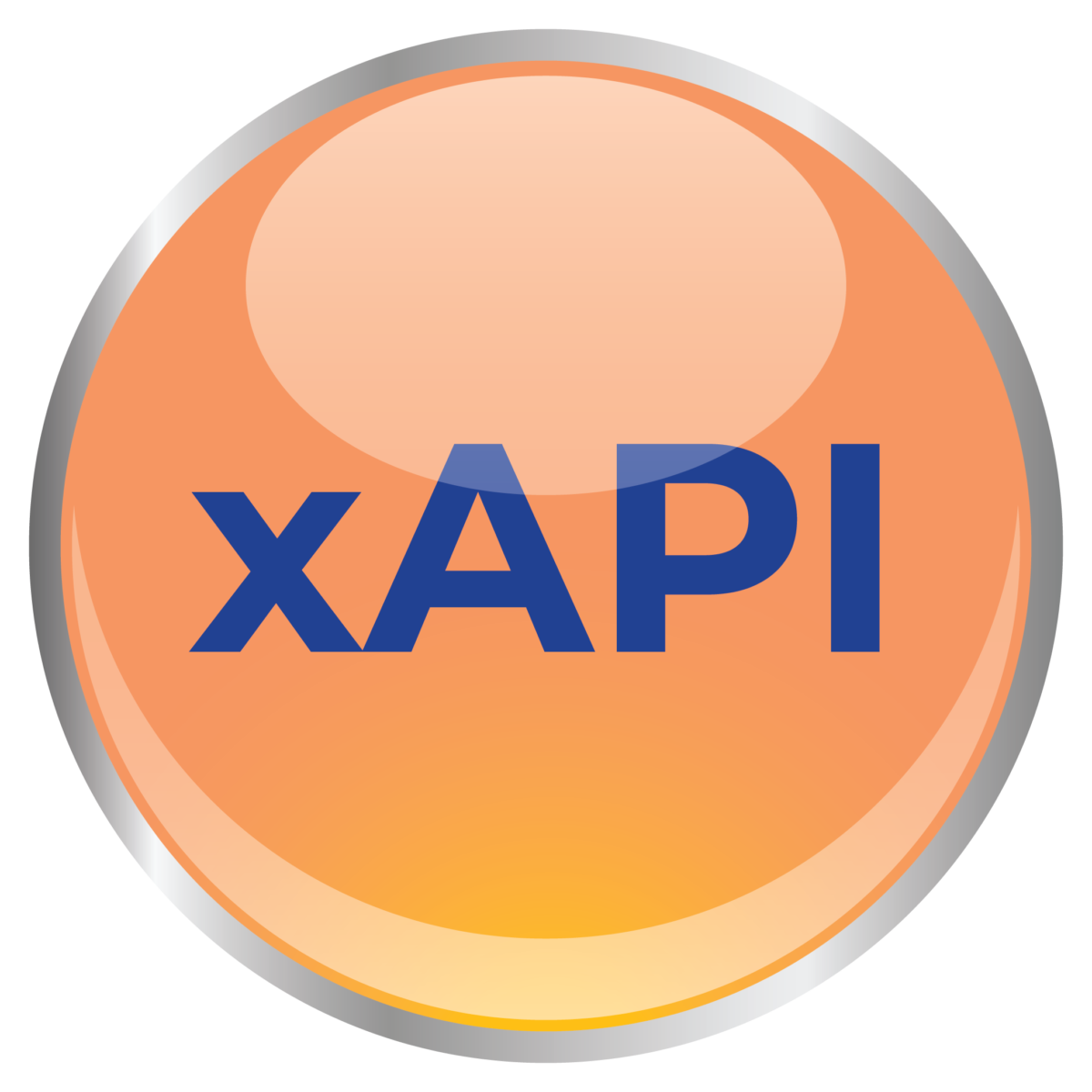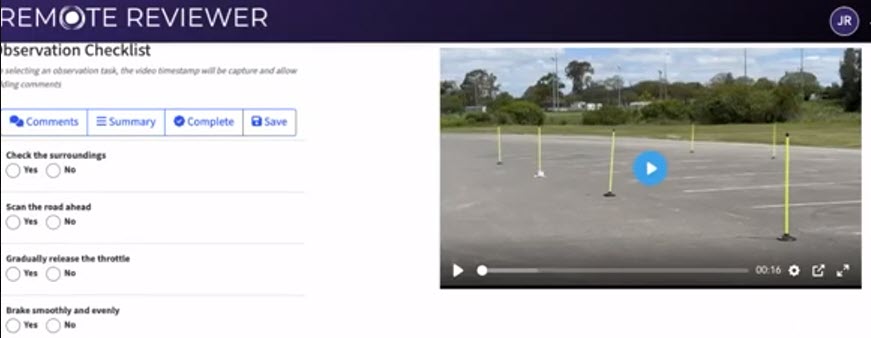Unlocking the Future of Assessments with xAPI
In the latest episode of the xAPI in Action series, I sit down with Julian Davis, the founder and creator of Remote Reviewer and Associate Fellow of Australian Institute of Training and Development. We’ll get to learn more about Julian, his interest in xAPI, and the future of assessments with xAPI through the innovative Remote Reviewer platform. The conversation also explores the value of xAPI across various industries and the future of its adoption. Julian shares insights valuable and actionable advice for both Learning & Development as well as Human Resources professionals. Click here to catch our conversation on YouTube.
Understanding xAPI and Its Importance
What is xAPI?
 Experience API (xAPI), formerly known as Tin Can API, is a specification for learning technology that enables the collection of data about a wide range of experiences a person has both online and offline. This data is captured in a consistent format and can be shared across different systems, providing a more detailed and nuanced understanding of learning and performance. This focus on interoperability suddenly expands the reach of xAPI beyond the traditional boundaries of L&D. To learn more about xAPI’s journey from inception to IEEE standard, watch the xAPI In Action interview with Andy Johnson here.
Experience API (xAPI), formerly known as Tin Can API, is a specification for learning technology that enables the collection of data about a wide range of experiences a person has both online and offline. This data is captured in a consistent format and can be shared across different systems, providing a more detailed and nuanced understanding of learning and performance. This focus on interoperability suddenly expands the reach of xAPI beyond the traditional boundaries of L&D. To learn more about xAPI’s journey from inception to IEEE standard, watch the xAPI In Action interview with Andy Johnson here.
Why xAPI Matters
xAPI allows organizations to:
- Track Learning Experiences: Beyond traditional e-learning, xAPI can track a variety of learning experiences, including mobile learning, simulations, and real-world activities. Human performance can be measured in real-time allowing for strategic, just-in-time coaching and nimble human resource allocation.
- Gather Detailed Data: xAPI can provide granular data on learner interactions, enabling more precise analysis, insights and personalization of learning.
- Improve Training Programs: By understanding how learners interact with content, what content and delivery methods truly impact performance allows organizations can refine and improve their training programs. xAPI replaces anecdotal assessments of training’s impact and simple knowledge check with data on how training changes human knowledge, skills and abilities.
Key Insights from the Interview
Julian’s Journey with xAPI
Julian venture into the world of xAPI began with his work in online training development. He has been developing online learning for two decades but has largely been limited in the data captured from learning experiences. His interest in xAPI was sparked by the potential to gather detailed data and insights that were previously unattainable.
The Evolution of Data Collection
Traditionally, learning data was limited to completion rates, time spent, and test scores. However, xAPI allows for a more nuanced approach, enabling organizations to ask deeper questions and gather data points that provide a comprehensive understanding of learner performance.
Real-Time Feedback and Continuous Improvement
One of the standout features of xAPI is its ability to provide real-time feedback. Julian emphasized the importance of inst ant and continuous feedback loops. For example, real-time “report cards” can immediately inform learners of areas needing improvement. This real-time coaching is crucial for shaping behavior, ensuring accurate application of skills and improving knowledge retention.
ant and continuous feedback loops. For example, real-time “report cards” can immediately inform learners of areas needing improvement. This real-time coaching is crucial for shaping behavior, ensuring accurate application of skills and improving knowledge retention.
Exploring Remote Reviewer
What is Remote Reviewer?
Remote Reviewer is a platform designed to leverage the capabilities of xAPI. Its users can capture evidence of their performance using various resources, such as videos, images and written answers. An expert can remotely access and review the stored data captured using xAPI statements. That person can then provide feedback facilitating continuous improvement. Click here to see the Remote Reviewer process flow.

Applications Across Industries
While Remote Reviewer is highly relevant in high-consequence learning spaces like petrochemicals, power generation, and manufacturing, its applications extend to other industries as well. For instance, in the hotel and hospitality industry, it can provide a structured way to capture and analyze the accurate completion of tasks, replacing ad-hoc methods like line cooks sending photos via cell phones to a supervsior.
Benefits of Structured Data Collection

Structured data collection through platforms like Remote Reviewer offers several benefits:
- Consistency: Following established xAPI provides and using consistent, published vocabulary ensures that data is collected in a consistent manner. Not only does this make it easier to analyze and compare the data, it ensures that the data can be transferred to other systems with confidence that the xAPI statement means the same thing to all the systems that “read” the data.
- Accountability: The xAPI data provides a clear record of performance, which can be reviewed and audited. The data also provides context such as the date and time on which a task was performed and even the systems used to execute the task.
- Efficiency: Automation streamlines the data collection process. Rather than going to multiple systems, having a single point to capture performance data saves time and reduces the chance of introducing errors through manual data entry.
The Future of xAPI Adoption
Overcoming Challenges
Adoption of xAPI is growing, but there are challenges to overcome. One significant hurdle is the need for L&D professionals to become more data-savvy. Julian points out that many in the field are not accustomed to using data to inform decisions. However, the xAPI community is known for its collaborative spirit, with members sharing knowledge and best practices to help others get up to speed.
Industry-Specific Adoption
In Australia, and globally, the adoption of xAPI is on the rise. Industries that rely heavily on data and performance metrics, such as healthcare, finance, and education, are particularly well-suited for rapid xAPI adoption. The ability to provide evidence-based insights and demonstrate the effectiveness and efficiency of training programs is a compelling reason for organizations to adopt xAPI.
The Role of IoT and API Integration
The integration of Internet of Things (IoT) devices and third-party APIs with xAPI opens up new possibilities. For example, IoT devices can provide real-time data on physical activities, which can be captured and analyzed using xAPI. This integration can enhance training programs by providing a more holistic view of learner performance. xAPI can also be used to “call” third-party API’s updating enterprise systems, issuing or rescinding credentials, and even granting physical access to facilities, equipment, and applications. Click here to learn more.
Actionable Tips for Implementing xAPI
Start with Clear Objectives
Before implementing xAPI, organizations should define clear objectives. What questions do they want to answer? What data points are necessary to gather? Having a clear plan will guide the implementation process and ensure that the data collected is meaningful.
Leverage Existing Resources
The xAPI community is a valuable resource. Engage with other professionals, attend conferences, and participate in online forums to learn from others’ experiences. Sharing knowledge and best practices can accelerate the adoption process and help avoid common pitfalls. Consider reaching out to one of the IEEE working groups for xAPI.
Invest in Training
To fully leverage the capabilities of xAPI, organizations should invest in training for their L&D teams. This includes understanding how to collect, analyze, and interpret data. Training can also cover the technical aspects of integrating xAPI with existing systems and platforms.
Pilot and Iterate
Start with a pilot project to test the implementation of xAPI. Gather feedback, analyze the data, and make necessary adjustments. Iterative improvements will help refine the process and ensure that the final implementation meets the organization’s needs.
Conclusion
The interview with Julian Davis provided valuable insights into the potential of xAPI and its applications across various industries. By understanding the capabilities of xAPI and following best practices for implementation, organizations can unlock new intelligence to improve training programs and better support learners. The future of xAPI is bright and with continued collaboration and innovation, its adoption will continue to grow, transforming the way we approach learning and development.
For those interested in learning more, be sure to check out the full interview and stay tuned for future episodes of “xAPI in Action.” If you’re attending the Learning Guild’s DevLearn Conference in Las Vegas, November 2024, don’t miss the opportunity to connect with industry experts and explore the latest advancements in xAPI.
Questions or comments? Contact RISC Inc today!

